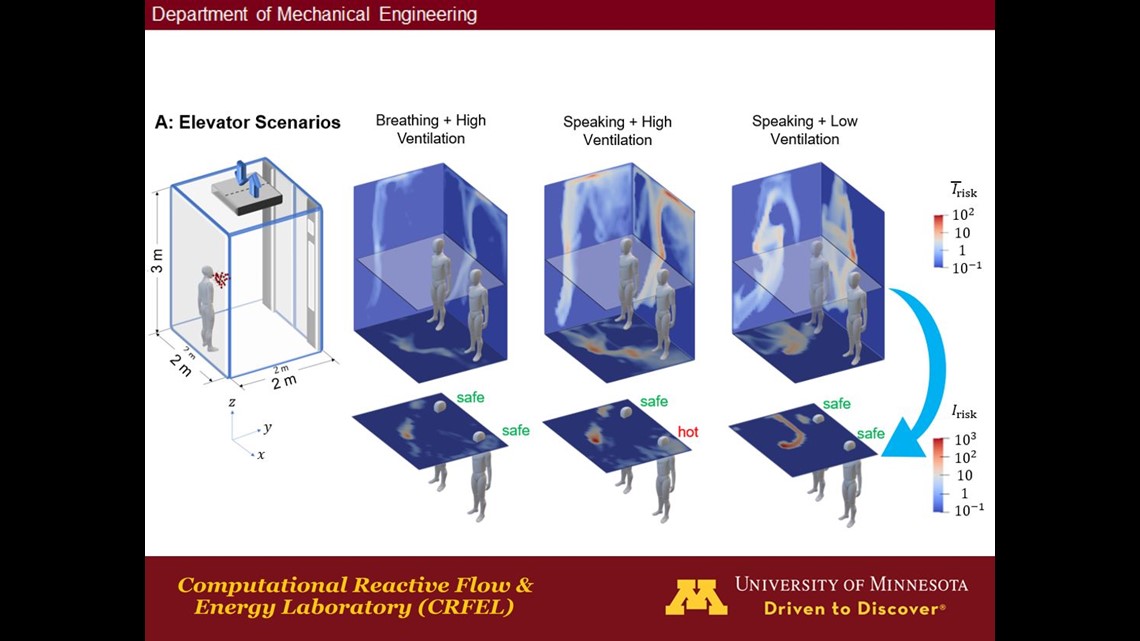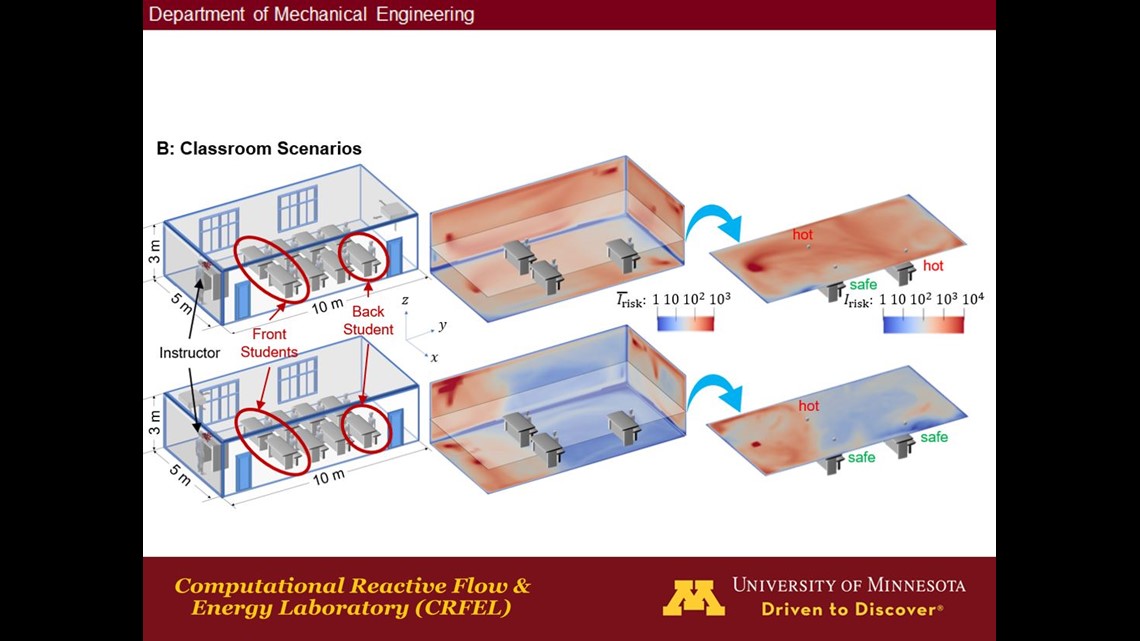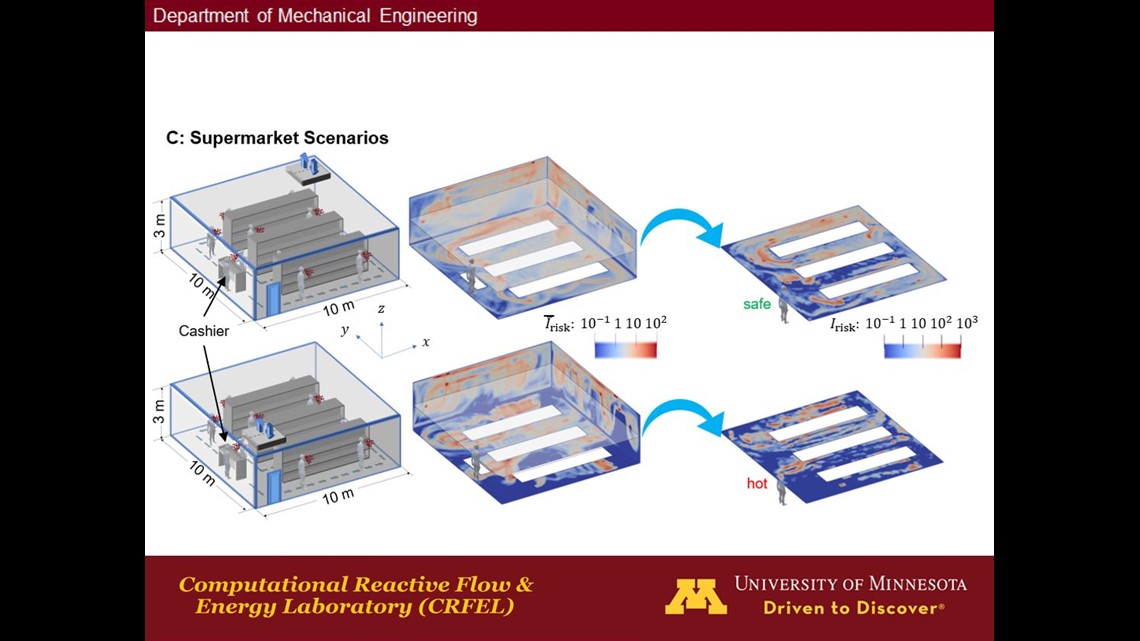MINNEAPOLIS, Minnesota — More than 200 scientists are calling for the World Health Organization to acknowledge that the virus that causes COVID-19 can spread in the air.
Meanwhile, researchers at the University of Minnesota are studying how aerosols carrying the virus can spread in indoor spaces.
"I think there's more and more consensus that we need to take care of this airborne transmission and we need to assume this transmission is there and making responding changes in our strategies to minimize risks," said Jiarong Hong, associate professor of mechanical engineering at the U of M.
He, along with Suo Yang, an assistant professor of mechanical engineering, looked at the indoor spread of COVID-19 in the elevator, classroom and supermarket.
In April and May, Hong and Yang received two grants to study how aerosols spread through speaking and breathing.
RELATED: U of M airborne droplet research could answer questions about potential coronavirus air transmission
Their findings, first reported in the Star Tribune, show how ventilation and location can impact the risk of transmission.
In the elevator, they considered a scenario where you have someone who is asymptomatic standing opposite to the door, breathing and speaking for about a minute. Blue means lower risk while red means higher risk.


Hong and Yang said their research found that because it was such a short duration, it made the risk of encountering aerosols low.
However, Hong said, "The ventilation tends to spread aerosols to other space. So you actually... you'll see there are some hot spots in the elevator."
Ventilation was a larger problem in the small classroom simulation with an asymptomatic teacher lecturing for 50 minutes with eight students.
"What is very surprising is we found actually only less than 2% of aerosol will actually be ventilated out after 50 minutes," Hong said.


Hong and Yang said they propose ventilating on multiple sides, even opening windows, and potentially changing the layout to avoid hot spots.
"We propose to put ventilation closer to the front so that would help remove aerosols generated from the instructor. That would be a less risk situation compared to the ventilation in the backside of the room," Hong explained.
The last setting was a small grocery store with an asymptomatic shopper moving throughout the store for 30 minutes. Hong and Yang said they saw 30%-50% of aerosols being vented out within 30 minutes. But depending on the ventilation location, the cashier could end up in a hot spot.


"There are a lot of practical guidelines we can derive from this research and one important thing is naturally we need to ventilate we need to actually optimize how we ventilate. So in the classroom setting with just ventilating air from one particular location, that is not very efficient," Hong said.
Researchers are now consulting the Minnesota Orchestra looking at how to potentially improve ventilation and seating arrangements to minimize risks.
Hong and Yang said their findings will soon be out in preprint. They are looking to study other common indoor settings, like restaurants.
KARE 11’s coverage of the coronavirus is rooted in Facts, not Fear. Visit kare11.com/coronavirus for comprehensive coverage, find out what you need to know about the Midwest specifically, learn more about the symptoms, and see what businesses are open as the state slowly lifts restrictions. Have a question? Text it to us at 763-797-7215. And get the latest coronavirus updates sent right to your inbox every morning. Subscribe to the KARE 11 Sunrise newsletter here. Help local families in need: www.kare11.com/give11.
The state of Minnesota has set up a data portal online at mn.gov/covid19.

